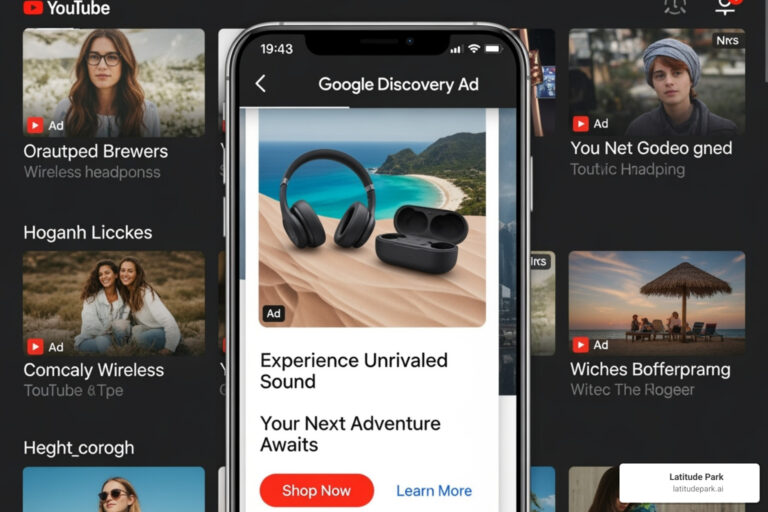Why Voice Search is Revolutionizing How Customers Find Your Business
To optimize for voice search, focus on conversational keywords, create content that answers questions directly, ensure fast page speeds, and prioritize local SEO with accurate business listings:
- Target question-based keywords – Use “how,” “what,” “where,” “why” phrases.
- Write conversational content – Match how people actually speak.
- Optimize for featured snippets – Provide concise, direct answers (under 40 words).
- Improve technical SEO – Ensure your site is fast, mobile-friendly, and secure.
- Perfect local listings – Complete your Google Business Profile with accurate NAP data.
- Use structured data – Schema markup helps search engines understand your content.
Voice search is already a dominant force. Nearly 60% of consumers aged 25-34 use voice search daily, and the number of U.S. voice assistant users is projected to exceed 157 million by 2026.
The shift is dramatic. A typed search for “italian restaurants NYC” becomes a spoken query: “What’s the best Italian restaurant in New York City?” This conversational approach changes how search engines deliver results.
For franchises, this creates both opportunity and challenge. Each location must capture these spoken queries while maintaining brand consistency.
I’m Rusty Rich, President and founder of Latitude Park. Since 2009, I’ve helped hundreds of franchises grow their digital footprint, and I’ve seen how optimizing for voice search provides a competitive edge in local markets.

The Shift to Conversational Search: Why Voice is Different
Voice search has become a natural part of daily life, reshaping how people find businesses online. The voice search technology behind assistants like Google Assistant, Amazon Alexa, and Apple’s Siri uses Natural Language Processing (NLP) to understand user intent, not just keywords.
This shift is evident in how people search on the go, whether walking down the street or cooking dinner. The queries are fundamentally different.
| Traditional Text Search | Voice Search |
|---|---|
| “pizza NYC” | “Hey Google, where can I find the best pizza in New York City?” |
| “weather tomorrow” | “What’s the weather going to be like tomorrow?” |
| “oil change near me” | “Where’s the closest place to get my oil changed?” |
| “franchise marketing” | “How do I market my franchise business effectively?” |
Understanding Voice Searcher Intent
To optimize for voice search, you must understand user intent, which typically falls into four categories:
- Informational: Users want to learn something (e.g., “How does franchise marketing work?”). They need clear, helpful answers.
- Navigational: Users know where they want to go (e.g., “Take me to Latitude Park’s website”). They want a fast path to your brand.
- Transactional: Users are ready to act (e.g., “Schedule a consultation with a franchise marketing expert”). These queries lead directly to conversions.
- Local: For franchises, these are crucial “near me” queries (e.g., “Find a franchise consultant near me”). These users are often ready to visit or call.
The hands-free convenience of voice search means users expect fast, accurate answers without clicking through multiple links. For more on how search intent drives strategy, see our guide on The Importance of SEO in Digital Media Marketing.
Key Differences from Traditional Text Search
Understanding the differences between voice and text search is key to capturing this audience.
- Query length: Voice searches are longer and more detailed. A typed “franchise marketing tips” becomes a spoken “What are the best marketing tips for franchise owners?”
- Question-based phrases: Voice searches are dominated by questions starting with Who, What, Where, When, Why, and How.
- Conversational language: Voice queries sound like human speech. Your content must match this natural phrasing.
- Immediacy of results: Voice searchers are often multitasking and expect instant answers.
- Single-answer results: Voice assistants usually read one answer aloud, making Position Zero (the featured snippet) critical for success.
This trend is undeniable. Voice search has grown 35x since 2008 and continues to accelerate, presenting a significant opportunity for multi-location franchises.
Content Strategies to Optimize for Voice Search

Success in voice search requires content that sounds like a real human conversation. Your content should be direct, friendly, and answer questions without forcing users to dig for information. This is what voice assistants look for when scanning your site.
Content creation for voice search means every piece of content should answer questions directly in a conversational tone. This improves readability and makes your entire website more user-friendly for everyone. For more on this, see our guide on Creating SEO-Friendly Content: Tips & Best Practices.
How to optimize for voice search using long-tail keywords
Typed searches are brief, but spoken searches are detailed. This makes conversational keywords the backbone of voice search optimization. Instead of “pizza delivery,” a voice searcher asks, “Where can I get pizza delivered to my house right now?”
Question phrases starting with “Who,” “What,” “Where,” “When,” “Why,” or “How” dominate voice search. Your keyword research must focus on these natural patterns. For example, optimize for “What time does the coffee shop open on Sunday?” instead of just “coffee shop hours.”
Accept natural user phrasing, including conversational words like “the,” “a,” and “can I.” Tools like AnswerThePublic, Google’s “People Also Ask” boxes, and Google Autocomplete are invaluable for finding these question-based keywords.
Earning Featured Snippets (Position Zero)
Featured snippets are critical because they are often the single answer read aloud by voice assistants. To earn them, you must provide direct answers in your content.
- Use concise paragraphs: Aim for under 40 words for the main answer, placing it at the beginning of your content.
- Use lists: Numbered lists and bullet points are highly effective for how-to guides and step-by-step instructions.
- Create how-to guides: These are voice search goldmines as they directly match common question patterns.
Structure your content to make the answer immediately obvious. This strategy not only wins featured snippets but also improves the user experience for all visitors. For more on this, explore The Ultimate Guide to On-Page SEO.
Technical & Local SEO: The Foundation for Voice Dominance
Great content is only half the battle to optimize for voice search. Technical and local SEO provide the foundation that ensures your content can be found and delivered instantly.

With 90.4 percent of voice searches happening on smartphones, users expect instant answers. Technical SEO delivers that speed, while local SEO ensures your business is the one that gets recommended. Your Google Business Profile is your digital storefront, providing the crucial information voice assistants need.
Boosting Performance with Technical SEO
The average voice search result loads 3.8 times faster than typical websites, making technical performance critical. Focus on these core areas:
- Page speed: Voice assistants favor fast-loading sites. Use tools like Google’s PageSpeed Insights to identify and fix performance issues like large images and bloated code.
- Mobile-friendliness: Your site must offer a flawless experience on all devices. A clunky mobile site is a surefire way to lose voice search traffic.
- HTTPS security: A secure site builds trust with both users and search engines. Google uses HTTPS as a ranking factor, and voice assistants prioritize trustworthy sources.
- Site architecture: A logical site structure with clear navigation helps search engines and voice assistants quickly find your most valuable content.
Why you must optimize for voice search in local results
Most voice searches are local. The growth in “near me” searches is driven by voice, with users asking specific questions like, “Where’s the closest pizza place that’s still open?”
- Google Business Profile: This is your most important local SEO tool. Ensure your name, address, phone number, hours, and services are complete and accurate.
- NAP consistency: Your Name, Address, and Phone number must be consistent across all online platforms to avoid confusing search engines.
- Customer reviews: Voice assistants prioritize businesses with strong, recent, positive reviews as a signal of quality.
- Local landing pages: Franchises need dedicated pages for each location with unique, locally relevant content.
For a deeper dive, see our guide on Local SEO: Optimizing Your Website for Local Search Results.
Leveraging Structured Data (Schema Markup)
Schema markup is code that acts as a translator, helping search engines understand the context of your content. It makes your information so well-organized that voice assistants can easily pull it for answers.
While schema creates rich snippets (like star ratings in search results), its main benefit for voice is providing clear context. Key types include:
- FAQPage schema: Explicitly marks questions and answers, making it easy for voice assistants to find and read responses.
- LocalBusiness schema: Marks up your business name, address, phone number, hours, and services for accurate local results.
- HowTo schema: Structures instructional content into a step-by-step process that’s perfect for voice assistants to read aloud.
Measuring Success and Future-Proofing Your Strategy
To optimize for voice search effectively, you must continuously monitor performance and adapt to a constantly shifting digital landscape. Performance tracking is essential for staying competitive as AI and algorithms evolve.
Use analytics to understand if your efforts are paying off. Are users finding you through voice queries? Are they engaging with your content? Also, monitor SERP features like featured snippets and “People Also Ask” boxes, as these are primary sources for voice assistant answers.
Key Metrics to Track for Voice Search
Go beyond traditional ranking reports and focus on metrics specific to voice search:
- Rankings for question keywords: Track your performance for long-tail, conversational phrases.
- Featured snippet ownership: This is a critical metric, as 40.7% of voice search answers come from featured snippets. Monitor which queries trigger your snippets.
- Clicks from “People Also Ask”: This traffic indicates your content is answering the right questions.
- Local pack visibility: For franchises, this is essential for capturing “near me” searches.
- Google Search Console reports: Filter your performance data for long-tail, conversational queries and analyze device-specific traffic to understand mobile voice search behavior.
Staying Ahead of the Curve
The voice search landscape is evolving rapidly. To stay competitive, anticipate these trends:
- AI Overviews: Google’s AI-generated summaries will influence voice answers, making direct, factual content even more important.
- Voice commerce: As users get more comfortable making purchases via voice, e-commerce businesses must optimize product information and checkout flows for spoken commands.
- Custom Alexa Skills or Google Actions: These voice apps create direct channels to customers and offer unique brand experiences.
- Continuous content auditing: Regularly review and update your content to align with current voice search trends and user behavior.
The voice assistant market is projected to reach nearly $32 billion by 2033. Investing in voice search now provides a significant long-term advantage. For more growth strategies, explore our guide on 8 Ways SEO Marketing Services Can Help Your Business.
Frequently Asked Questions about Voice Search Optimization
Here are answers to common questions business owners have when they optimize for voice search.
How long does it take to see results from voice search optimization?
Voice SEO is an ongoing process that builds on your traditional SEO foundation. If your site has good authority, you may see initial improvements like a featured snippet within a few weeks. However, significant, sustained impact typically takes several months of consistent effort.
The timeline depends on your competition, site authority, and implementation speed. The good news is that every optimization for voice also strengthens your traditional SEO.
Do I need a separate strategy for each voice assistant like Alexa and Siri?
No, you don’t need completely separate strategies. Focus on Google first, as Google Assistant dominates smartphone voice searches. The best practices we’ve discussed—conversational content, fast page speeds, and structured data—work universally.
However, since assistants like Alexa and Siri also pull data from sources like Yelp and other search engines, maintaining broad online visibility across major platforms is key. Your core strategy remains the same, but you ensure it’s effective everywhere.
Is voice search going to replace traditional text search?
It’s unlikely to replace text search completely. Voice and text serve different needs and will continue to coexist. Voice is for quick, convenient answers while multitasking, while text is better for complex research or private queries.
Voice search is a critical and growing component of user behavior. A comprehensive SEO strategy must account for both methods to ensure customers can find your franchise locations, no matter how they search.
Conclusion
The world of search has changed, and voice is leading the charge. When you optimize for voice search, you’re getting ahead of a massive shift in how customers find and interact with businesses.
Your customers are already asking their devices conversational questions, expecting immediate, local answers. Businesses that adapt to this behavior will thrive.
Success requires a seamless experience combining conversational content that answers real questions, fast technical performance, and a strong local presence. The strategies we’ve covered—from long-tail keywords and featured snippets to structured data and a perfect Google Business Profile—work together to capture this growing audience.
For franchise businesses, managing voice search across multiple locations is a complex challenge. It requires a custom approach for each location while maintaining brand consistency, demanding expertise in both SEO and franchise operations.
At Latitude Park, we specialize in helping franchises steer these sophisticated, multi-location marketing challenges. We ensure every franchisee is found, whether a customer is typing or speaking their query.
The voice search revolution is here. Act today to gain a significant advantage. Your customers are talking—are you ready to be heard?









